The best portable SSD: super-fast and convenient on-the-go storage
The best portable SSD is the fastest way to keep your photos and videos backed up and mobile
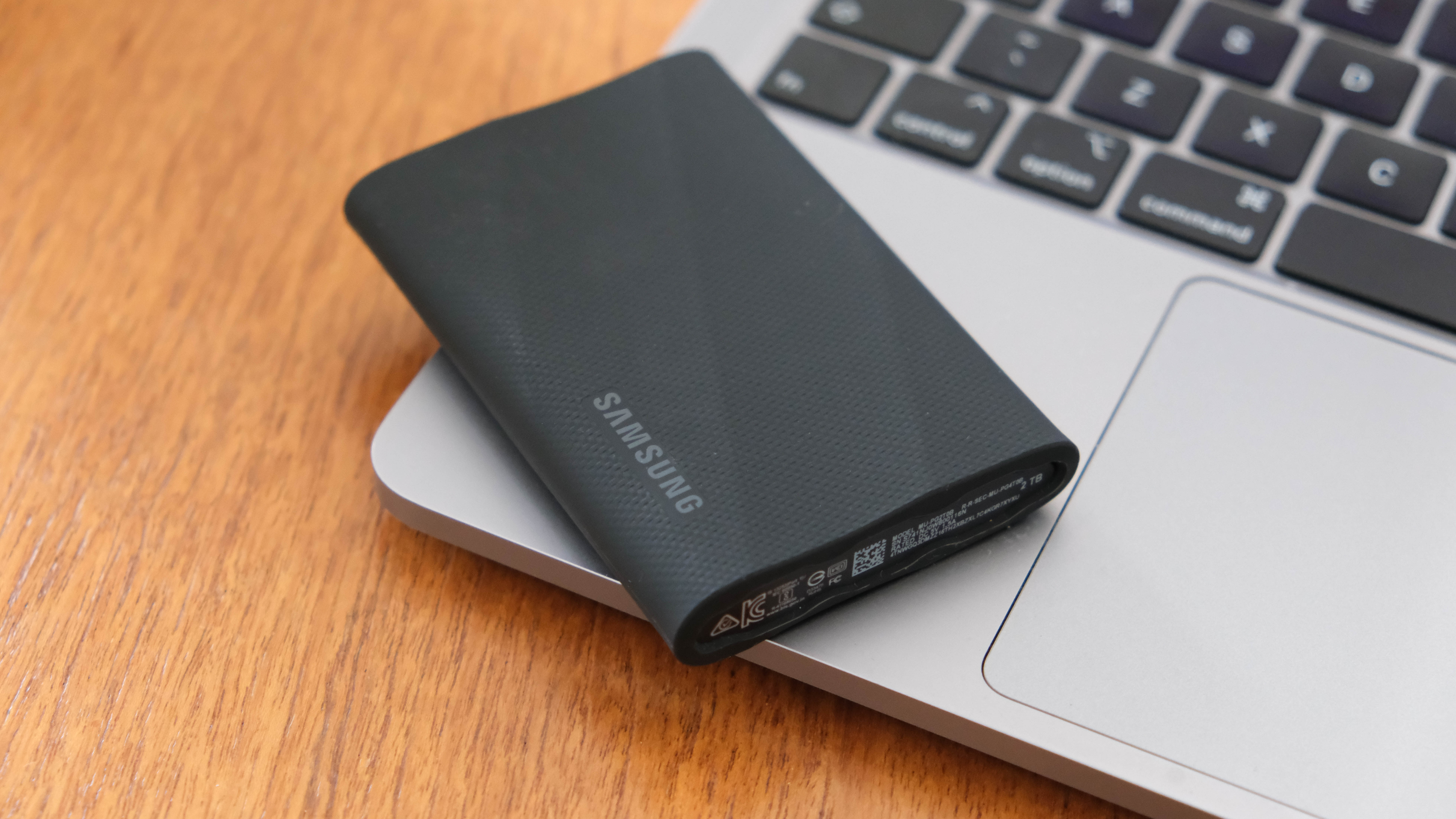
The rubberized exterior offers some drop protection, as well as making the SSD grippy on a desk so it doesn't slide around
(Image credit: Gareth Bevan / Digital Camera World)If all your shooting is fast filling your computer’s storage – or you need to keep your digital portfolio portable – then it's time to invest in one of the best portable SSDs. A conventional portable hard disk drive still offers the most bytes for your buck, but for top transfer speeds, a solid state drive (SSD) is a must. The best portable SSDs are also a fraction of the size and weight of a conventional portable hard drive, and though an SSD's speed and portability still commands a premium over a hard drive, pricing is now much more accessible for storage space up to 1 terabyte.
Rather than testing transfer speeds using unrealistic benchmarking software, we instead recorded maximum sustained read and write rates when shifting photos and video to and from a Windows PC packing a fast internal m.2 SSD and Thunderbolt 3 connectivity to ensure no testing bottlenecks.
The best portable SSDs
Why you can trust Digital Camera World
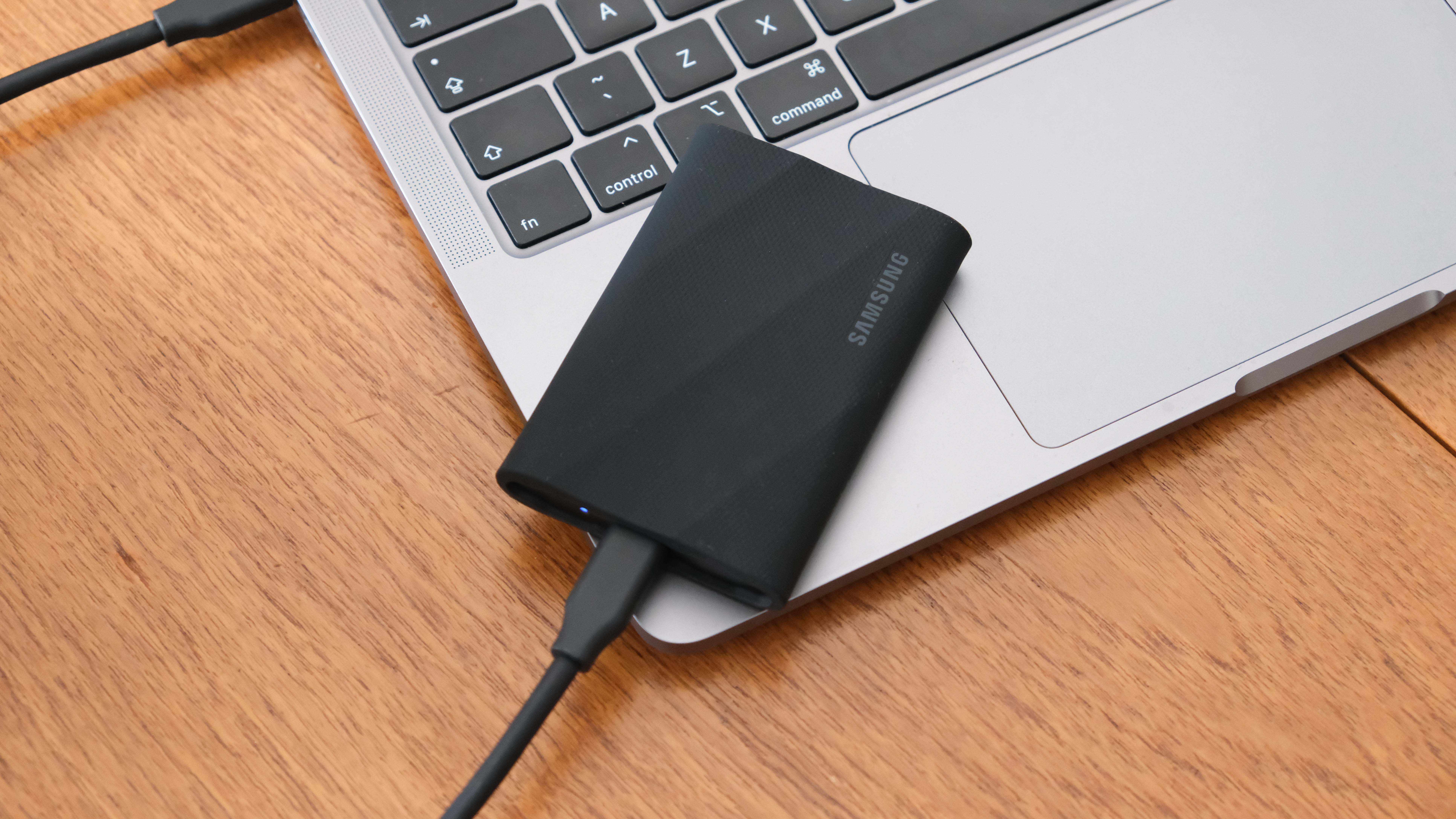
Specifications
Reasons to buy
Reasons to avoid
The Samsung T9 represents a notable improvement in speed compared to the T7, although the increase in performance is not substantial enough to make you want to rush out and replace your existing portable drives right away. But this is a great choice for anyone looking for a new drive.
The Samsung T9 also looks better than ever, with its protecting rubberized exterior having a textured wavy pattern to it that looks and feels more sophisticated than the rough-and-tumble T7 Shield or bare aluminum T7.
Ready to roll straight out of the box, the T9 eliminates any hassle by including both USB-C and USB-A cables, as well as being formatted in exFAT for plug-and-play with both Windows and Mac computers.
Read our full Samsung T9 review for more details.
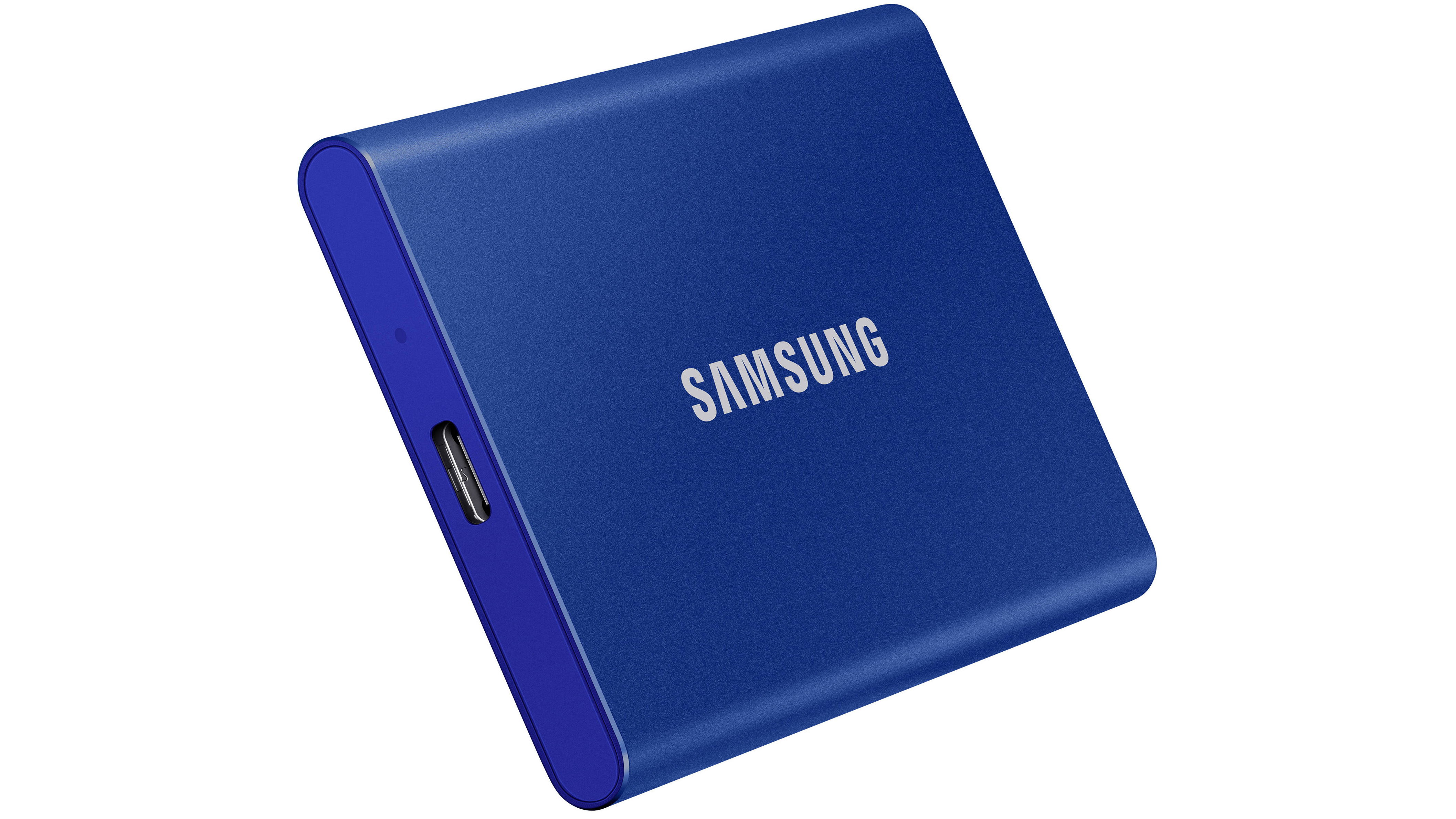
2. Samsung Portable SSD T7
Specifications
Reasons to buy
Reasons to avoid
Samsung's entry is as sleek as portable SSDs come, with a simple matte aluminum casing that oozes understated quality. Measuring only 85 x 57 x 8mm, it easily slips into a shirt pocket, and there are even three color finishes: gray, blue, and metallic red.
You might not guess it from the stylish exterior, but the SSD T7 is also rated to survive a 2-metre drop, and your data can be protected by 256-bit hardware encryption. 500GB, 1TB and 2TB capacity options are available, with each boasting hugely fast transfer speeds of up to 1050MB/s read and 1,000MB/s write.
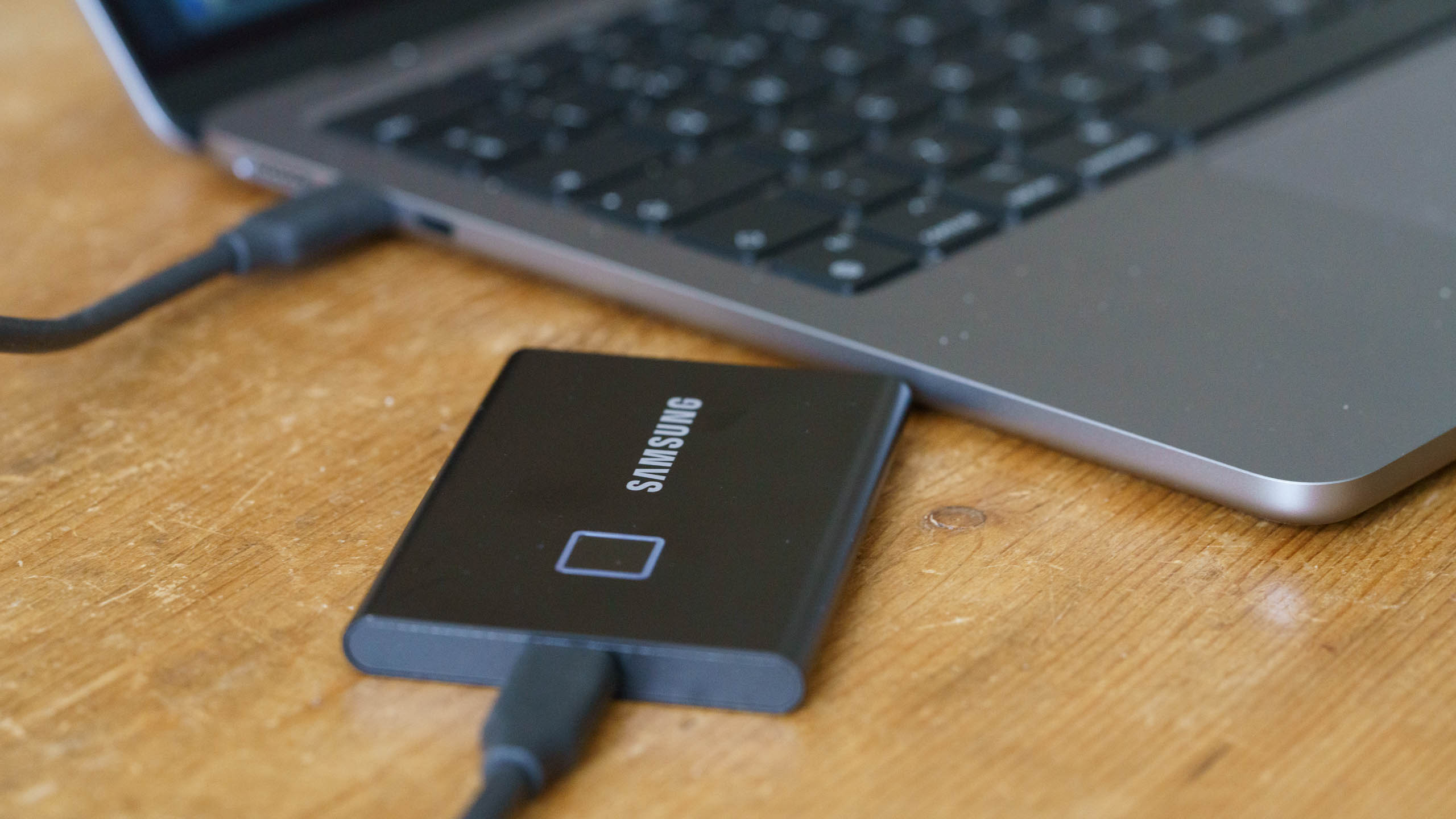
Specifications
Reasons to buy
Reasons to avoid
Measuring just 85 x 57 x 8mm and weighing only 58g, the Samsung T7 Touch solid state drive (SSD) is perfect for slipping in your bag when you’re going to be away from home or the office and you need some storage space for your images and videos. There are now faster drives available, but it can read data at up to 1,050MB/s and write at up to 1,000MB/s, making it suitable for temporary storage or use as a working drive.
The fingerprint recognition system has a negligible impact on the price of the T7 Touch in comparison with the T7, in fact, you may find the 500GB version is a little cheaper, and it could come in handy occasionally.
Read our full Samsung T7 Touch review for more details.
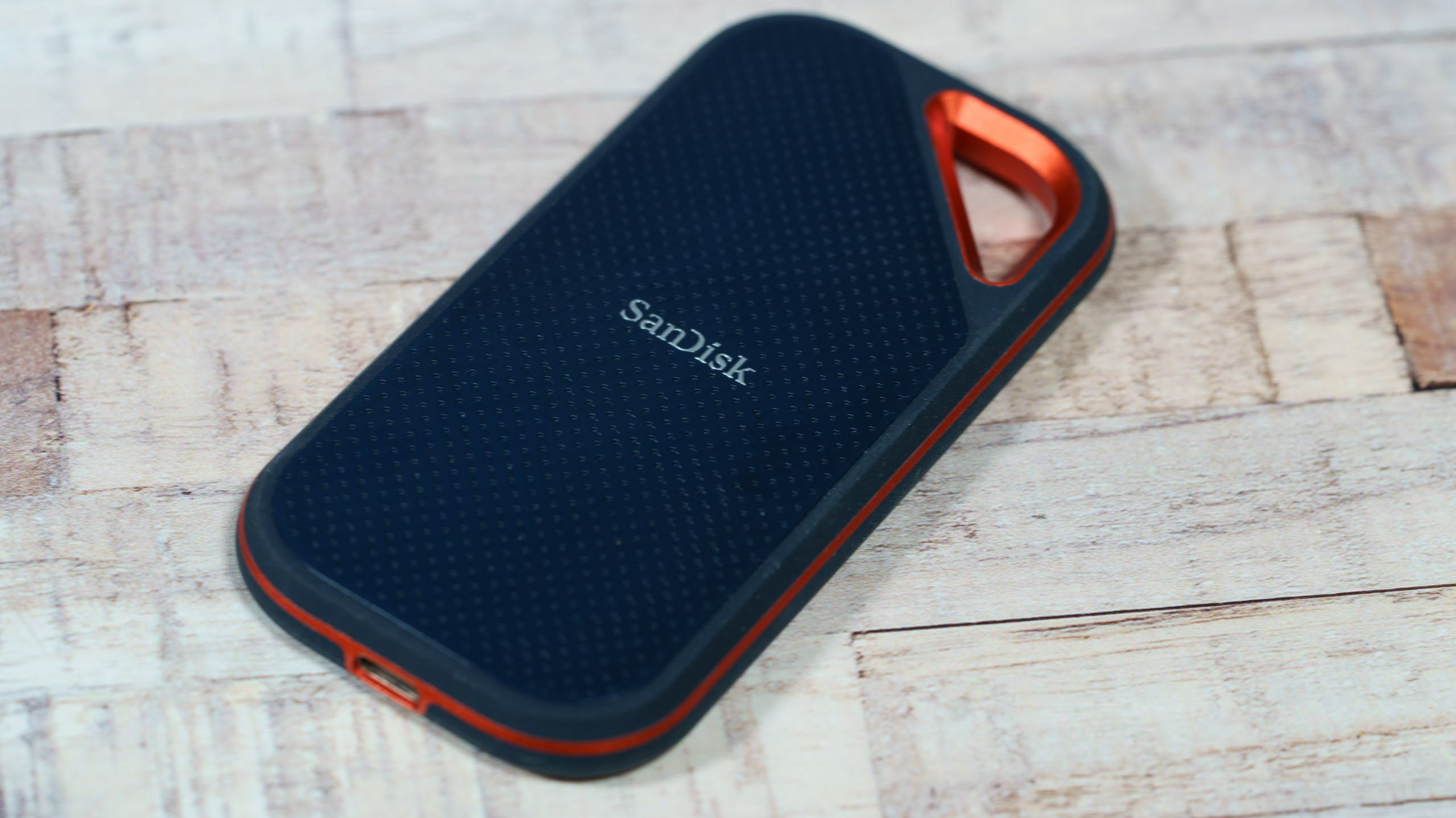
Specifications
Reasons to buy
Reasons to avoid
UPDATE, August 2023:
Numerous stories are emerging from credible tech websites and individual users that some SanDisk and WD-branded portable SSDs are experiencing sudden and unpredictable drive failure, resulting in data loss. We have contacted parent company Western Digital for a statement on the issue but have yet to receive a response. Consequently we cannot unreservedly recommend the purchase of a SanDisk or WD-branded portable SSD until the matter has been decisively resolved.
The SanDisk Extreme Pro Portable SSD V2 is SanDisk's flagship portable SSD, boasting read/write speeds up to 2000MB/s - that's nearly twice as fast as the non-Pro version (some retailers aren't using the 'V2' designation though, so look out for the 2000MB/s performance rating to ensure you're getting the right SSD version).
Checking the data transfer speeds using Blackmagic Disk Speed test with a 2022 MacBook Air, we saw write speeds of just under 3000MB/s and read speeds a little over 3000MB/s - that’s faster than SanDisk claims!
What's more, the drive is also well-made and durable - it's designed to survive being dunked in water or being dropped from 2m - which gives you confidence that your files will be kept safe.
Read our full SanDisk Extreme Pro Portable SSD V2 review
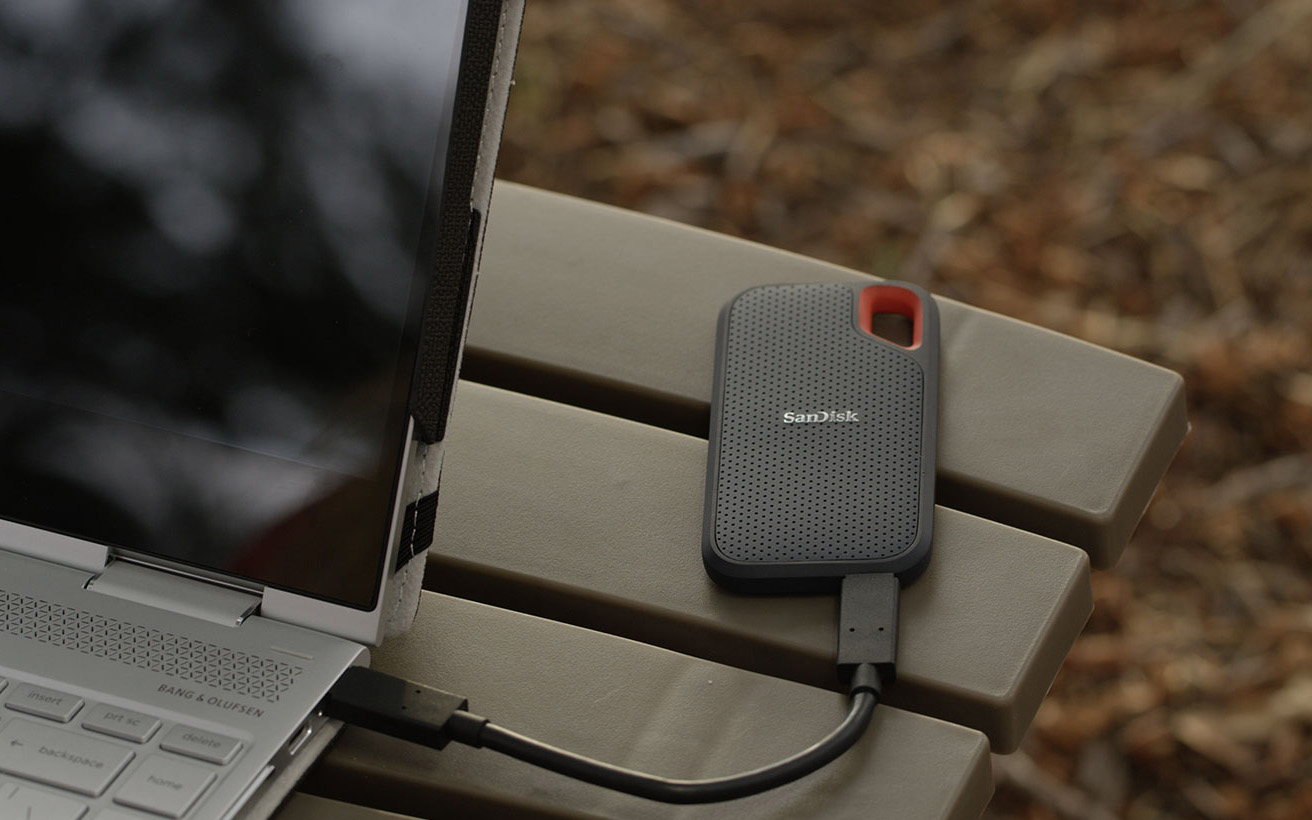
5. SanDisk Extreme Portable SSD V2
Specifications
Reasons to buy
Reasons to avoid
UPDATE, August 2023:
Numerous stories are emerging from credible tech websites and individual users that some SanDisk and WD-branded portable SSDs are experiencing sudden and unpredictable drive failure, resulting in data loss. We have contacted parent company Western Digital for a statement on the issue but have yet to receive a response. Consequently we cannot unreservedly recommend the purchase of a SanDisk or WD-branded portable SSD until the matter has been decisively resolved.
This is not SanDisk's top-of-the-range portable SSD - that honour currently goes to the Extreme Pro Portable SSD V2 (above), but this cheaper non-Pro version is still very fast, and appreciable cheaper too.
SanDisk quotes a peak read speed of 1050MB/s for the Extreme Portable SSD. We were able to verify this claim with the CrystalDiskMark storage benchmark app, though achieving such speed in real-world file transfers is unlikely. Despite testing with a blazing fast laptop, we could ‘only’ manage a peak 780MB/s when reading a large video file (a best-case scenario) and 564MB/s when writing it to the drive. Still, that’s hugely fast, and image transfer speeds of 693/496MB/s read/write are equally incredible. It should also be noted that a portable SSD will rarely - if ever - perform as fast in actual file transfers as in a software benchmark.
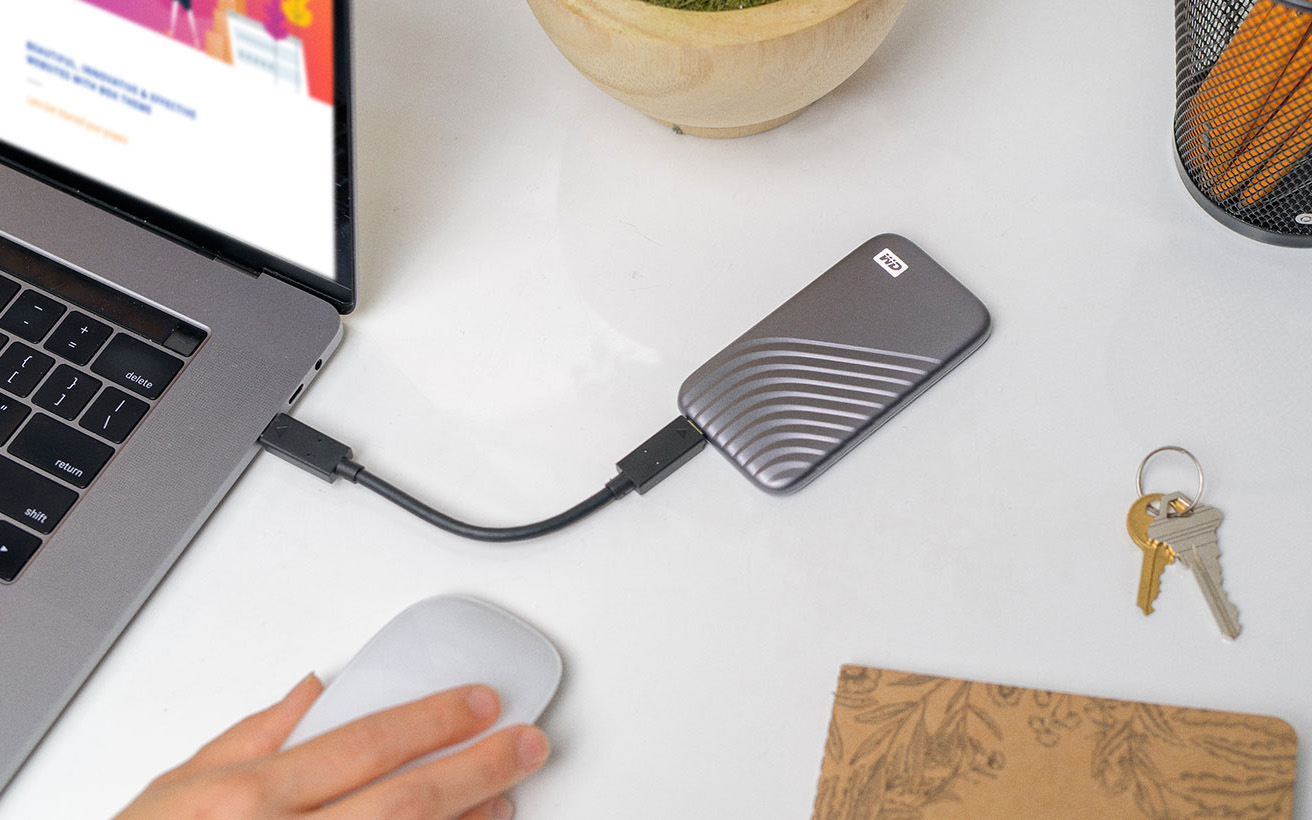
6. WD My Passport SSD (NVMe)
Specifications
Reasons to buy
Reasons to avoid
UPDATE, August 2023:
Numerous stories are emerging from credible tech websites and individual users that some SanDisk and WD-branded portable SSDs are experiencing sudden and unpredictable drive failure, resulting in data loss. We have contacted parent company Western Digital for a statement on the issue but have yet to receive a response. Consequently we cannot unreservedly recommend the purchase of a SanDisk or WD-branded portable SSD until the matter has been decisively resolved.
This is WD's latest version of its popular MyPassport SSD, not to be confused with the previous incarnation which is still on sale. The new version has a smoother, more rounded design, but while it looks different, it still goes by the exact same My Passport SSD name, just for that little extra confusion.
We weren't all that impressed with the speeds we got from the old My Passport SSD, but this new one is built around NVMe SSD technology and promises to be nearly twice as fast, with advertised max read/write speeds of 1050MB/s and 1000MB/s respectively. And refreshingly we found WD's claims to be bang-on, as CrystalDiskMark measured 1041MB/s and 1002MB/s read/write rates - very impressive. Switching to real-world testing inevitably brings a performance hit, but the new My Passport SSD still performs well. We achieved an average 651MB/s and 569MB/s read/write speed with video files, and 538/364MB/s with multiple image files. These are marginally faster results than the SanDisk's superb Extreme Pro Portable SSD, apart from the image write speed where the My Passport SSD was nearly 30% slower.
Capacity options include 500GB, 1TB and 2TB, with connectivity being via USB Type-C 3.2 Gen 2. A USB-C to USB-A adapter is included in the box.
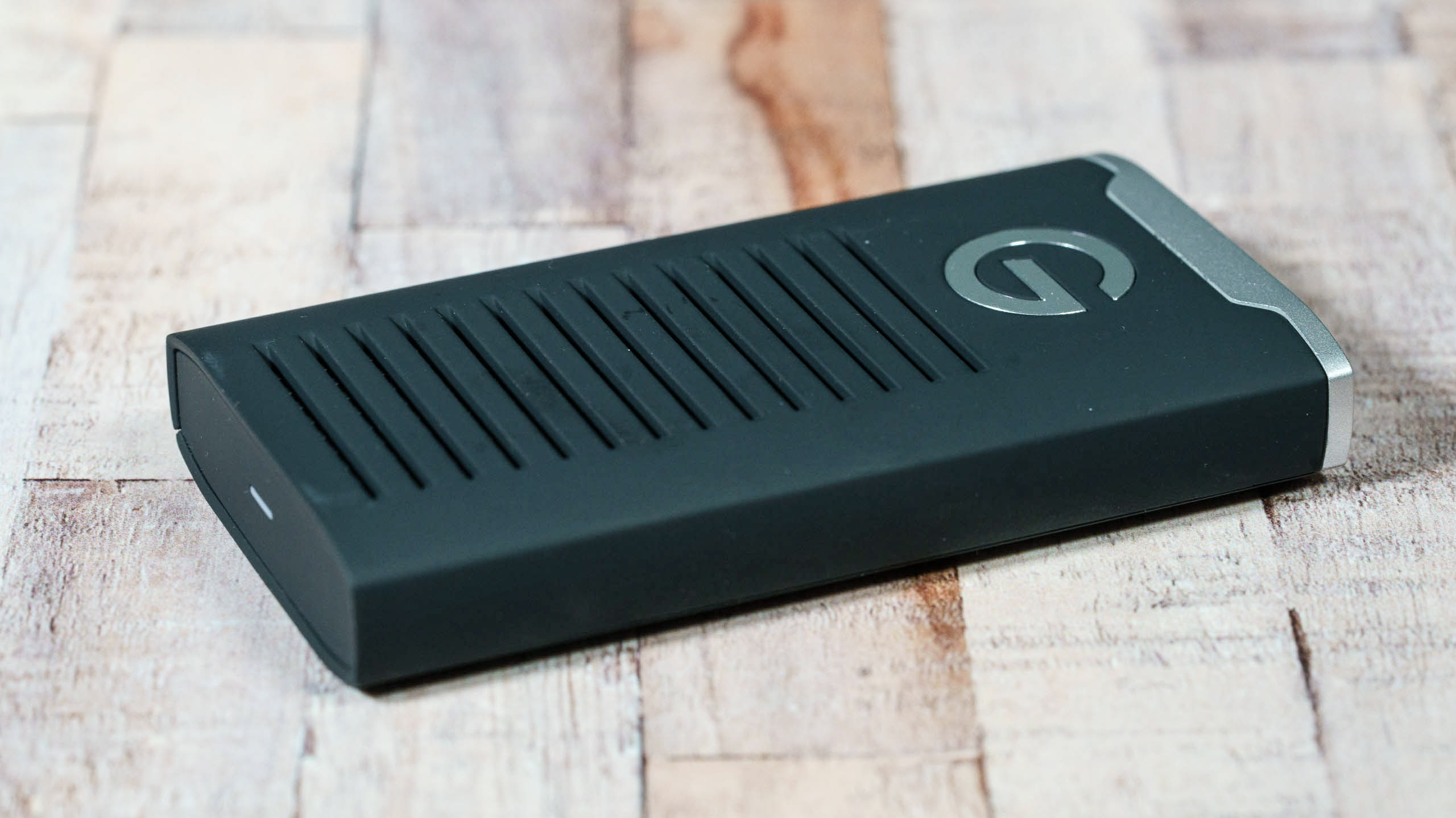
Specifications
Reasons to buy
Reasons to avoid
UPDATE, August 2023:
Numerous stories are emerging from credible tech websites and individual users that some SanDisk and WD-branded portable SSDs are experiencing sudden and unpredictable drive failure, resulting in data loss. We have contacted parent company Western Digital for a statement on the issue but have yet to receive a response. Consequently we cannot unreservedly recommend the purchase of a SanDisk or WD-branded portable SSD until the matter has been decisively resolved.
The standout feature of this SSD is its ruggedized design that protects the drive against a 3-metre drop and 1000lb of crushing force, plus the exterior is IP67 rated to resist dust and moisture. Despite this extra exterior protection, the drive's 95mm x 50mm x 14.5mm dimensions are only marginally more bulky than the non-ruggedized WD My Passport SSD.
Inside the toughened shell is a fast SSD which SanDisk claims can transfer data at up to 560MB/s - impressive stuff. The drive connects via an up-to-date USB 3.1 Gen 2 Type-C connection, though a Type-A converter is included to maintain compatibility with older computers.
Though we couldn't quite match the drive's claimed 560MB/s max transfer speed, we did clock it at a very respectable 410/353MB/s when reading/writing video. Image transfer speeds of 307/298MB/s read/write are also hugely impressive. Factor the five-year warranty and this drive has every base covered.
See our full SanDisk Professional G-Drive SSD review
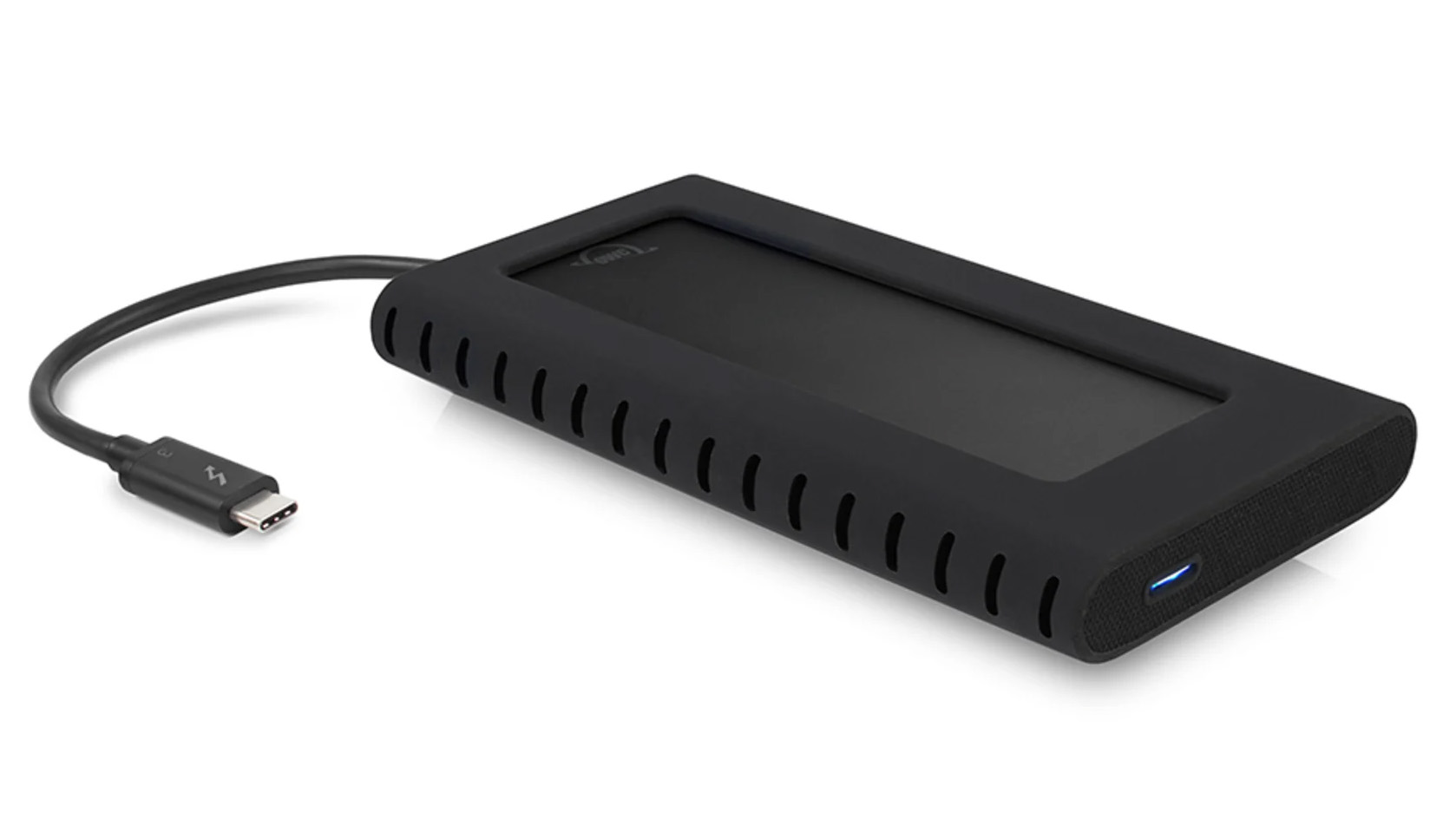
8. OWC Envoy Pro EX Thunderbolt 3
Specifications
Reasons to buy
Reasons to avoid
With its removable rubberized bumper and bombproof build quality, it's no surprise that the rock-solid Envoy Pro EX boasts military-grade MIL-STD810G drop protection. However, all this ruggedness does have a downside: bulk. At 14.5 x 7.4 x 2.3cm and 300g with the bumper in place, this drive is positively gargantuan next to rival Sandisk or WD portable SSDs, and it even outsizes the power brick for our high-end testing laptop.
So it'd better have plenty of performance to compensate. Thankfully, with NVMe SSD technology and a Thunderbolt 3 connection promising a theoretical 40Gbps bandwidth (that's 4x faster than USB 3.1 Gen 2), the Envoy Pro EX has all the right ingredients for winning performance.
CrystalDiskMark gets things off to a good start with stunning peak sequential read/write speeds of 1440/726MB/s respectively, though this is some way short of OWC's claim of "up to 2800MB/s". Real world file transfers will always be slower than a synthetic benchmark test, but we still recorded a hugely impressive 995MB/s peak read speed when shifting one massive video file, though this figure did drop as the transfer progressed, leaving the final averaged video read speed at a more modest - though still very rapid - 645MB/s. An average 612MB/s read speed moving multiple image files is also superb, though write speeds take a significant performance hit, with an average 481MB/s when writing video and just 278MB/s when writing multiple images. That image write rate did peak at a healthier 413MB/s during the transfer, but the drive couldn't sustain this speed, hence the slower average figure.
The Envoy Pro EX is available in 460GB, 1TB, 2TB and 4TB capacities - the latter being unusual among portable SSDs, and ideal if you need to keep 4K or even 8K video content backed up and mobile.
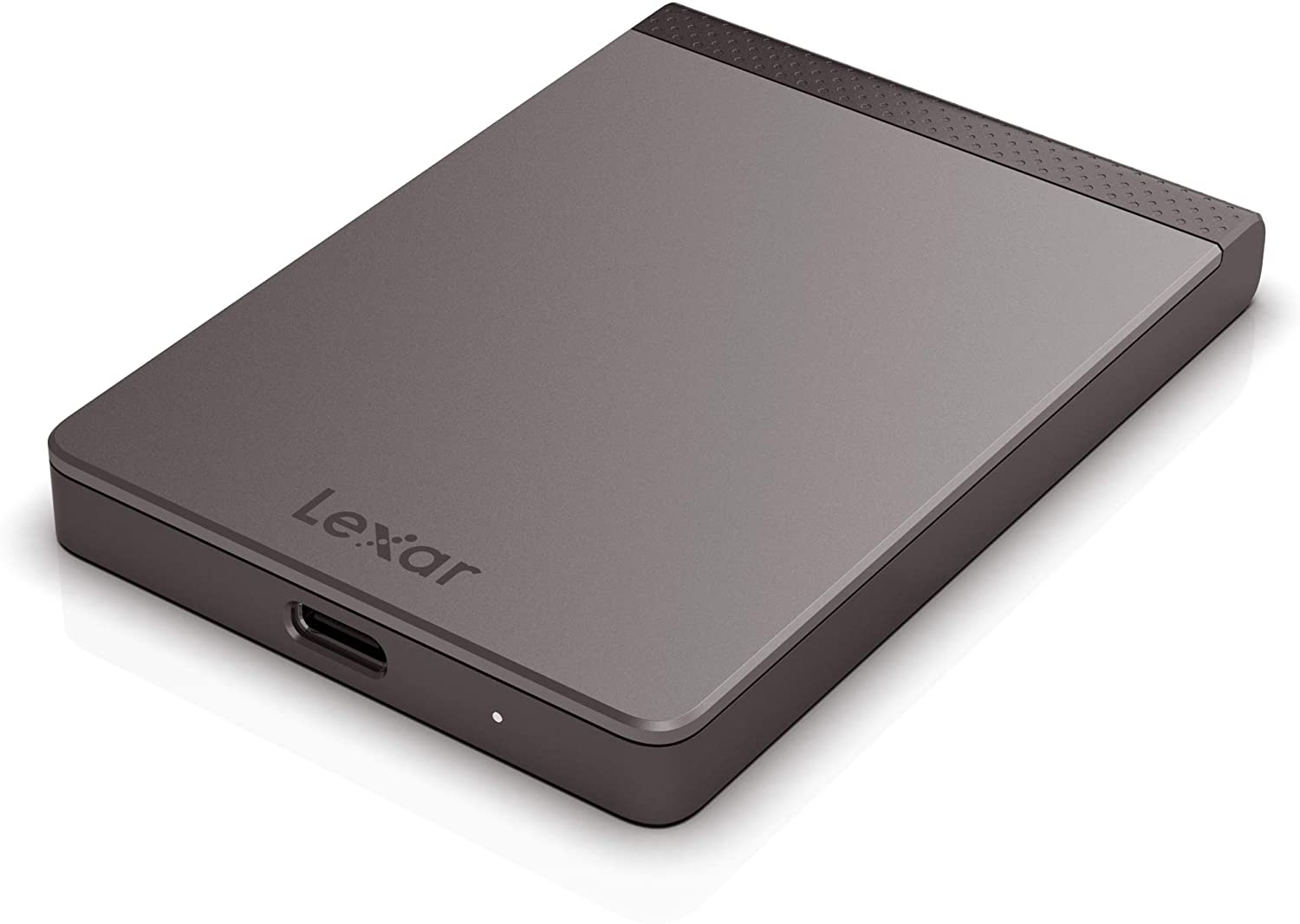
9. Lexar SL200 Portable SSD
Specifications
Reasons to buy
Reasons to avoid
Lexar is a brand usually associated with top-notch memory cards and card readers, but it also offers several portable SSDs. The SL200 is its latest offering, and measures an easily portable 86 x 60 x 9.5mm. Build quality feels reassuringly solid, and the matte silver finish looks the part next to most modern laptops.
Lexar advertises maximum read/write speeds of 550/400MB/s, which is fairly typical for a non-NVMe SSD. We clocked the drive at a maximum 448/289MB/s when reading/writing a single large video file - a best-case real-world speed scenario. Transferring large quantities of small image files inevitably slows any SSD down, but the SL200 still managed a reasonable 384/267MB/s read/write. These speeds are broadly comparable to the similarly-compact Samsung SSD T5, however that SSD does tend to be cheaper than the Lexar when comparing equivalent capacities.
The Lexar SL200 can be had in the popular 512GB, 1TB and 2TB capacity options, and connects via a USB 3.1 Type-C port on the drive. USB Type-C to Type-C and Type-C to Type-A cables are included in the box.
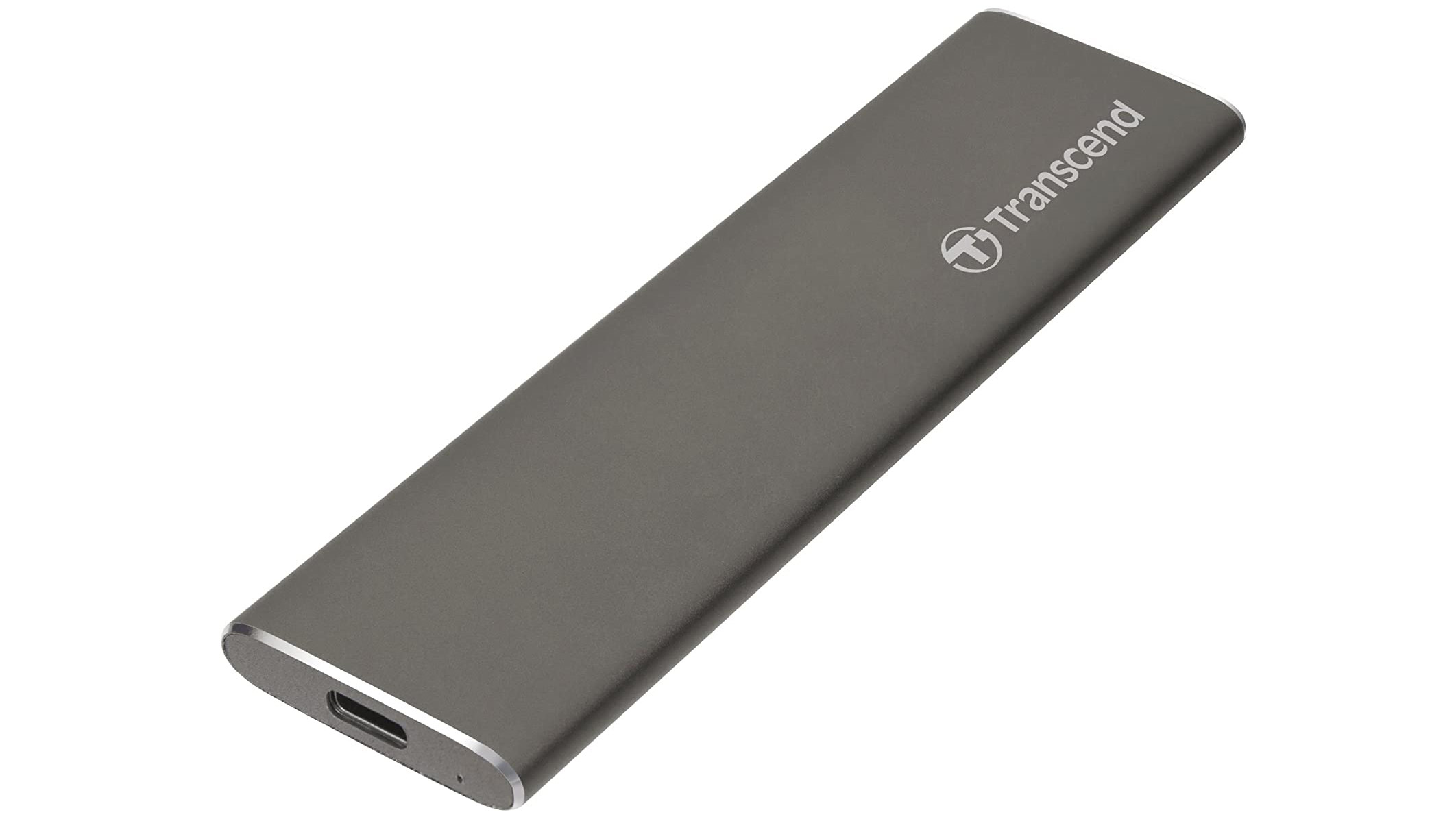
10. Transcend ESD250C
Specifications
Reasons to buy
Reasons to avoid
If you're after a seriously slim SSD, this offering from Transcend is just the ticket. Measuring a mere 7.5mm thick, it's appreciably thinner than a typical portable SSD, and though longer than most at 120mm, it's only 33.6mm wide. The matte aluminum outer casing also looks the part, with its space-grey finish especially complementing Apple products.
With the aid of Transcend's bundled Elite software, the drive can be formatted for Windows or Mac, or you can connect it directly to an Android mobile device that supports USB On-The-Go. USB Type-C to Type-C, along with a Type-C to Type A cable are included to allow connection to desktop, laptop or phone.
The drive utilises a modern USB 3.1 Gen 2 interface. Its 10 Gbit/s speed rating is easily enough to max out the drive's claimed 520MB/s max read and 460MB/s max write rates. We actually achieved even faster read/write speeds of 564/476MB/s in CrystalDiskMark, though as is almost always the case, real-world speeds were a bit lower in our testing. When transferring multiple images and a single large video file, the ESD250C managed 464/328MB/s video read/write speeds, and 327/305MB/s read/write when shifting images.
When it comes to capacity, you can have any size you want, as long as it's 960GB.
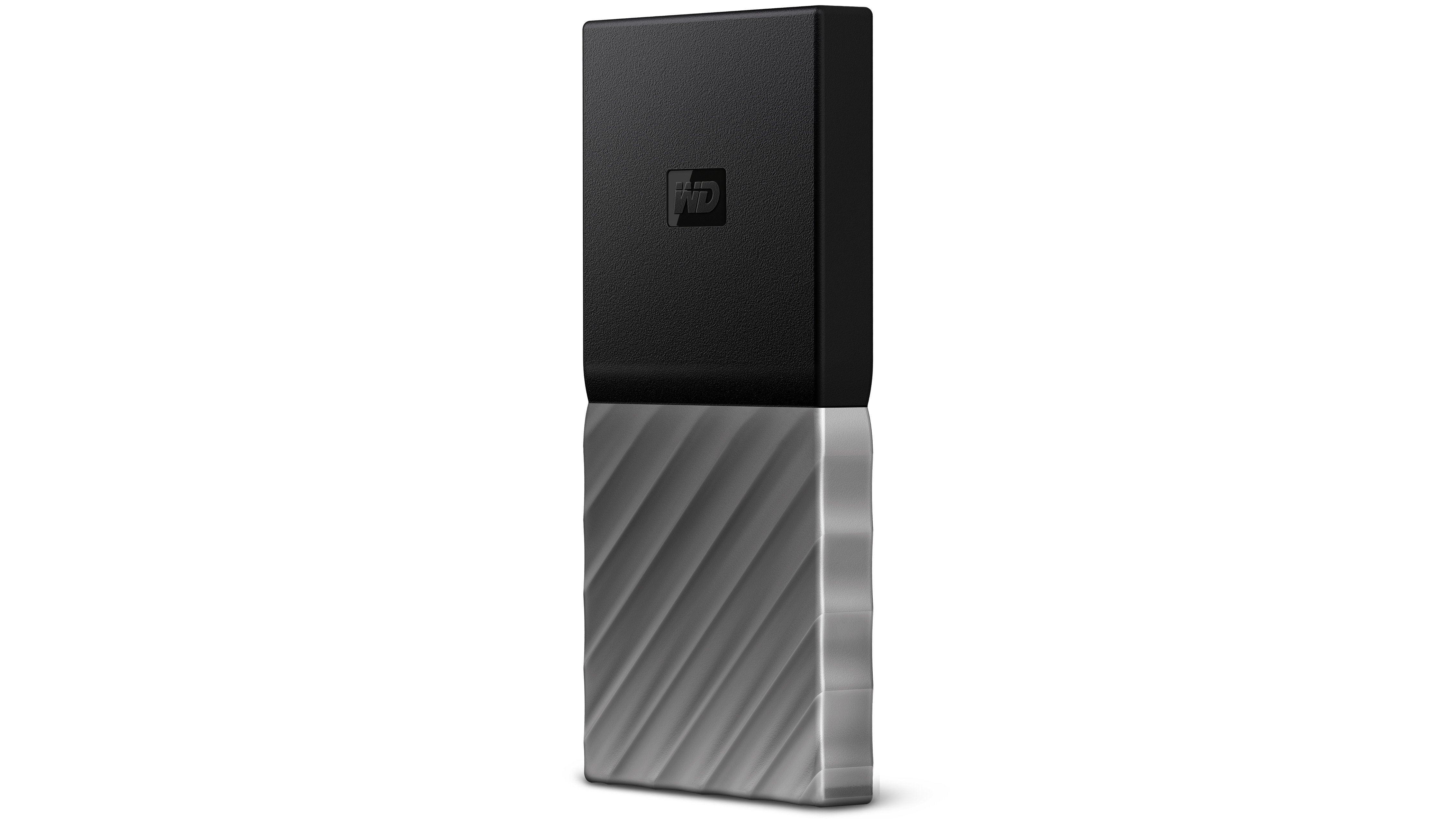
11. WD My Passport SSD
Specifications
Reasons to buy
Reasons to avoid
The My Passport SSD is certainly one of the more stylish portable SSD's on the market, with its part metal-effect casing and svelte 90 x 45 x 10mm size also making this one of the smaller portable SSDs you can buy. It's available in 256GB, 512GB, 1TB and 2TB capacities, with the 512GB version currently being the price/capacity sweet spot at £80. The USB 3.1 Gen 2 Type-C connection ensures fast transfer speeds, and for computers that lack a Type-C port, WD includes a Type-C to Type-A adapter in the box.
Performance is overall very good, but not quite up there with the best. We clocked the My Passport SSD at a very healthy 392MB/s when reading a single large video file, though a 201MB/s video write rate is much more pedestrian. Likewise, 234MB/s read and 198MB/s write speeds when transferring multiple image files, while perfectly adequate, is nothing special.
Five things to look for in a portable SSD
1. Bounce back
Conventional hard disk drives use sensitive moving parts, but not SSDs, making them much less vulnerable to drops.
2. Formatting: Mac or Windows?
Some drives are pre-configured for either Mac or Windows. This can almost always be changed with the right software.
3. Feel the speed
Don’t expect even an SSD to transfer a large batch of image files as fast as it’ll shift a single video file of the same size.
4. Well connected
All portable SSDs are powered by their USB connection, so don’t require a separate power brick.
5. Little extras
Many manufacturers also bundle extras like backup software, data encryption, or even complimentary cloud storage.
More buying guides
Get the Digital Camera World Newsletter
The best camera deals, reviews, product advice, and unmissable photography news, direct to your inbox!
Ben is the Imaging Labs manager, responsible for all the testing on Digital Camera World and across the entire photography portfolio at Future. Whether he's in the lab testing the sharpness of new lenses, the resolution of the latest image sensors, the zoom range of monster bridge cameras or even the latest camera phones, Ben is our go-to guy for technical insight. He's also the team's man-at-arms when it comes to camera bags, filters, memory cards, and all manner of camera accessories – his lab is a bit like the Batcave of photography! With years of experience trialling and testing kit, he's a human encyclopedia of benchmarks when it comes to recommending the best buys.

